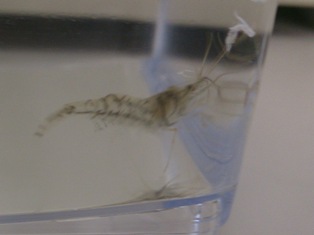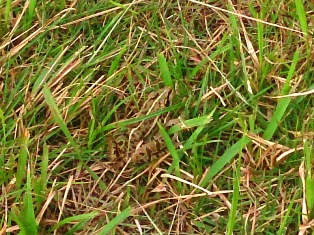
Study
Creatures of a biotope
These are the examples of the creatures seen well in biotope. There are pages of the detailed explanation if you click the photograph.Killifish
The general killifish is called Japanese killifish, and the length is
approximately 3-4cm. The surface of a body is gray and dark brown. It
lives in a freshwater inhabiting widely from the north of Japan to the
south.
Shrimp

Numaebi is a shrimp inhabiting in the fresh water. Yamato shrimp and Minami freshwater shrimp are famous.
Crawfish
Originally, as for the crawfish, there was the Japanese crawfish which
inhabited Japan. American crawfish was brought in from the United
States by a person.
Tortoise
As for tortoise, there are spotted turtle and pond turtle, Mississippi
red-ear turtle.
Mississippi red-ear turtle is maximum 28cm, and a female becomes larger
than a male.
Grasshopper
The grasshopper has various kinds.
Show Ryo locust has a sharp head in a triangle forward.
Dragonfly
As for the dragonfly, approximately 5,000 kinds are in the whole world. Approximately 200 kinds are distributed over Japan.
It is the changing insect of the form after the stage of growth called egg - larva - imago.
Butterfly
As for the butterfly, they are distributed over almost all land environment,such
as forest, grassy plain, big desert and so on. Approximately 17,600 kinds
are known. It is known that 250 kinds are in Japan. There is no clear
distinction point with the moth.
Frog

It is known that approximately 6,500 kinds are in the whole world, and
64 kinds are distributed over Japan. About half of the frogs in Japan
are Japanese endemic species.
Firefly

The firefly has approximately 40 kinds in Japan. There is a firefly shining like Genji firefly, there is a firefly which does not shine like Oba firefly.


